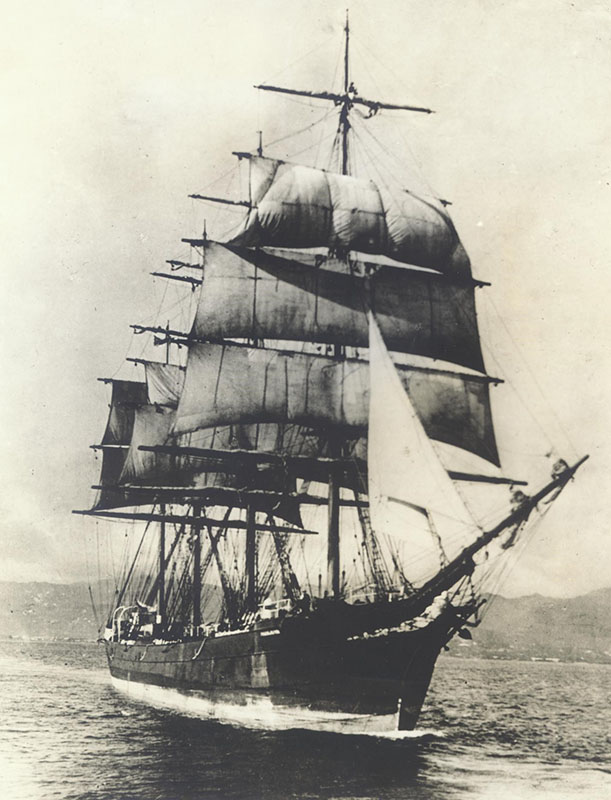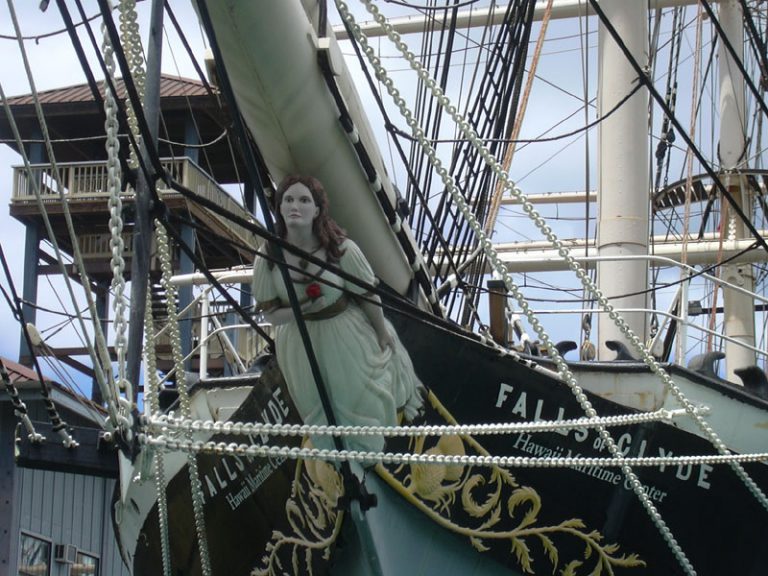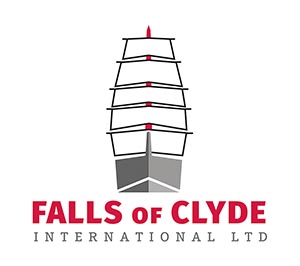David O’Neill is director of Falls of Clyde International, a non-profit vested in preserving Scotland’s maritime heritage. The 280-foot-long Falls of Clyde completed in 1878 is the last of the full-rigged, iron-hulled clippers. It is designated a US National Historic Landmark and moored at a maritime museum in Honolulu that is now closed to the public. The ship is no longer seaworthy and needs $1.5 million in immediate repairs or it will be scuttled. O’Neill devised a bold plan to rebuild the ship as a modern sail craft with eco-friendly electrical propulsion. The foundation plans a return of clipper tea races in 2025.

Return of the Clipper Tea Races
In the late 1800s racing 2000-ton, 200-foot long, four-mast tall ships with 30-men crews at speeds of up to 32 kilometers per hour from Foochow, China to London was a 99-day spectacle that rivaled today’s FIFA World Cup. With a ten-pence per ton premium on top of the 5 pound per ton price of tea and a cash prize of 100 sterling for the first captain to reach port, the annual race (viewed as a sporting event with wagers a plenty) meant fortunes won and lost. From the first race in 1865 to the last in 1872 Londoners eagerly anticipated September when a glut of fresh tea first arrived.
British and American clipper ships were the marvel of their day but Scotland’s ship builders in Aberdeen on the River Clyde were the most renowned. The race of 1866 pitted 57 ships on a journey of 14,000 miles. Three contenders arrived within two hours on the same tide. The world’s two fastest clippers, the Taeping and the Ariel docked 28 minutes apart, the winning captain of the Taeping gallantly splitting the prize with is rival.
David O’Neill: I see this project as an opportunity to bring tea consumption to the attention of a global audience, to what it once was. It could attract global sponsors on a par with major ocean racing events and boost local communities and businesses in cities along the route. Importers, exporters, growers, retailers even tea drinkers and the media will follow this for reasons ranging from their interest in heritage tea, the environment and new technologies used in clean-emission shipping. It will truly be a spectacle and interactive experience.
Tea Biz: What inspired you to resurface these famous races?
David: I was around nine years old, in primary school, here in Glasgow. I was inspired by a book of short stories of famous events, such as the story of the clipper Cutty Sark versus the Thermopylae, a story of adversity, man against the elements and this Clyde-built, super fast-sailing ship, racing another home to the U.K.
The story had excitement, disappointment, danger, and it captured the hugeness of the sea. How clever we were to be able to be smart and innovative to solve problems, all lessons I learned in life and ones that I’ve passed to my own kids.

Our ship was built in Port Glasgow in 1878. Once it returns to Scotland, she will be rebuilt to meet today’s standards of structural integrity and meet today’s safety standards for ships. To celebrate her rebirth, what better way to show the world what Clyde-built heritage means, than by recreating the tea race. In this way we get to promote clean emission shipping as both vessels will be converted to all-electric or a hybrid clean fuel mix.
We see this as an annual event, with a challenging vessel each year to join in, aiming to having a fleet of sailing ships, in the future taking part, all because of tea.

Restoring the Falls of Clyde
Only three of the fabled clipper ships remain. Like her seven sister ships, the Falls of Clyde carries the name of historic waterfalls in Scotland. She was built as a bulk carrier and eventually bought by Glasgow merchants Wright & Breckenridge which meant she regularly travelled to India and Pakistan on trade routes. She was then sold to Matson Shipping in 1899 and taken to Honolulu, making 60 voyages between Hilo, HI and San Francisco carrying sugar and passengers until 1907. The ship has been on display at the Bishop Museum of History and Science since 1968.

The foundation writes that the “Falls of Clyde remains the symbol of a time of great innovation, ingenuity and engineering, she truly is a piece of history that shouldn’t be forgotten as ships like her opened the seaways for the new designs of the British Merchant Fleets of the 20th Century – fast steamships and turbine powered innovators of their day! There is so much history imbued in the very iron that was used to build her and she deserves to sail for another 140 + years.”

Click to donate to the restoration and return of the Falls of Clyde clipper ship to Scotland.
Link to share this post with your colleagues
Signup and receive Tea Biz weekly in your inbox.
Never miss an episode
Subscribe wherever you enjoy podcasts:

